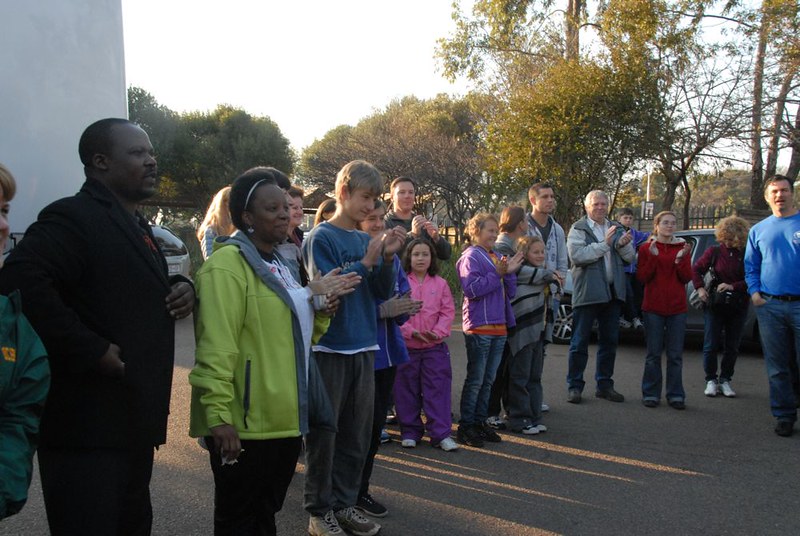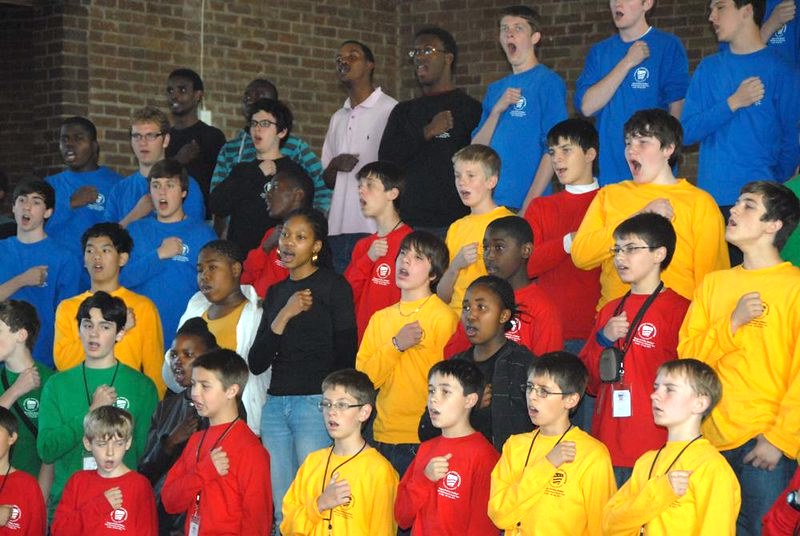
View the Photo Gallery on Flickr: Goodbye Pretoria 7/23
We sang a fond farewell to our Pretoria homestays and headed to Soweto – South West Township – outside of Johannesburg. This is a vibrant, sprawling black South African community that is the size of a small US city. The boys had been in several townships, but nothing could prepare them for the sheer size and scope of “the mother township.” The dichotomy of utter poverty and joie de vivre never ceases to amaze me.
We spent an hour in the Hector Peterson Memorial. Very emotional. We prepared the boys for the intensity of the exhibit, but it’s only when you experience it first hand that you come face to face with the tragedy that was apartheid. It took the death of an innocent thirteen year-old boy (and sixteen others that day) to wake the world up to what was happening in South Africa. Many other young adults would be imprisoned, tortured, and killed before the revolt ended in the late 80’s. It would take fourteen years until Nelson Mandela was released and another four years for him to be elected president, the official start of the new South Africa. But June 16th, 1976 was the turning point.

View the Photo Gallery on Flickr: Hector Peterson 7/23
The high school students of Soweto decided to organize a march to protest the insistence by the National (white) government that the children of Soweto begin learning their subjects in Afrikaans. In a nut shell, the government feared that the young blacks were becoming too educated. By forcing them to learn in Afrikaans, it would insure permanent disability and therefore inequality. I asked the boys to think of their hardest subject (math!) and then imagine trying to learn it in, say, Russian. They got it.
But the teenagers of South Africa were not having it. We know well the resolve of teenagers when they get something in their head! Some things never change, and teens are the same the world over.
As Antoinette Peterson was marching, with fellow students, towards the square where the local police headquarters sat, she passed by the school of her younger brother Hector. He spotted her, and asked where she was going. She told him never mind, to stay put at his school. But Hector – your typical pesky little brother – followed her against her wishes. So she told him to stay close at her side. When the two of them arrived in the square, thousands of teens had gathered. The police were waiting for them. It started out peaceful, but at some point, tear gas was released, rocks began flying, and then, shots were fired. Antoinette went to shield Hector, but in the chaos, he had already run off. She began searching for him desperately. And then, to her utter horror, she spotted him on the ground, bleeding profusely. He had been gunned down by the police. An older boy she did not know (the name escapes me) picked him up, and the two of them ran for help. But Hector was already gone. The very famous shot of these three children captured the nightmare of apartheid in a way nothing else had or would. The imagine flashed around the world. Before long international sanctions were placed on South Africa. All because of one life tragically ended by the brutality of discrimination.
I have had the honor of knowing Antoinette, who now runs the educational program at the Museum, for over ten years. When KSB came the first time, Antoinette stood with us at the very spot where Hector was gunned down. We sang in his memory.
This time around Antoinette was not able to be there in person, but we sang to her into my phone. We ad libbed a folk song that was central to the struggle that I had forgotten about until I read about it in the Museum. (Senzenina: “What have we done?”) The Chamber Choir then sang “Prayer for the Children.” As you can imagine it was profoundly moving.
I’ll never forget Antoinette’s words. “Your singing made me cry, but I’m sure, somewhere Hector is smiling.”
What an honor it is to come into these peoples’ homes, hearts, histories – lives.
From there we went to Regina Mundi Church where we got a tour of this historic meeting place during the struggle. Police could not enter a place of worship, and so it was a safe haven for Nelson Mandela and fellow freedom fighters to gather and organize. Eventually the police disregarded the separation of church and state and would storm the church from time to time. There are still bullet holes and broken pieces of furniture in the chancel area that we saw up close.
View the Photo Gallery on Flickr: Regina Mundi and Soweto Goodbye
We then had a “Sing-In” with the Regina Mundi Church Youth Choir. They sang for us, we sang for them, and then we sang together our new South African pieces. Great fun. We shared a delicious, traditional township lunch: meat, pap. choca-laca, and salad. At the end of the lunch we passed a basket around and the boys donated money. It will benefit a needy member of the Youth Choir. The boys gave generously and it felt good to give back to the people who’ve given us so much.
After saying goodbye to our Sowetan friends, we headed off for the airport. Last stop: beautiful Cape Town.
More later…

Leave a Comment